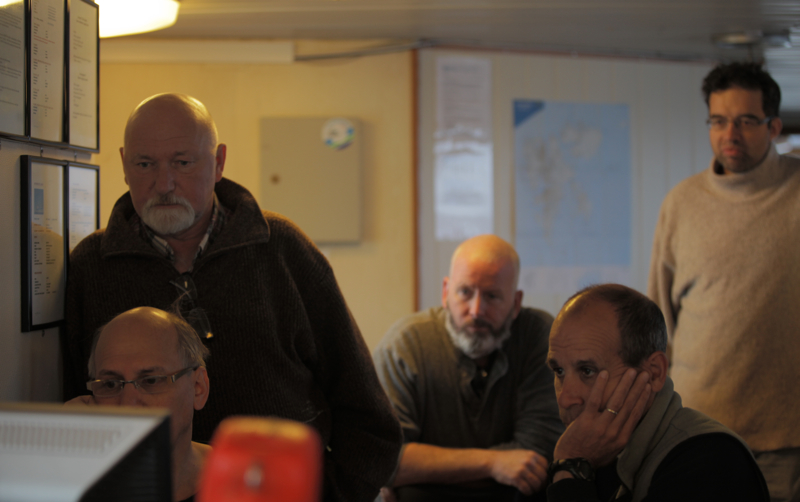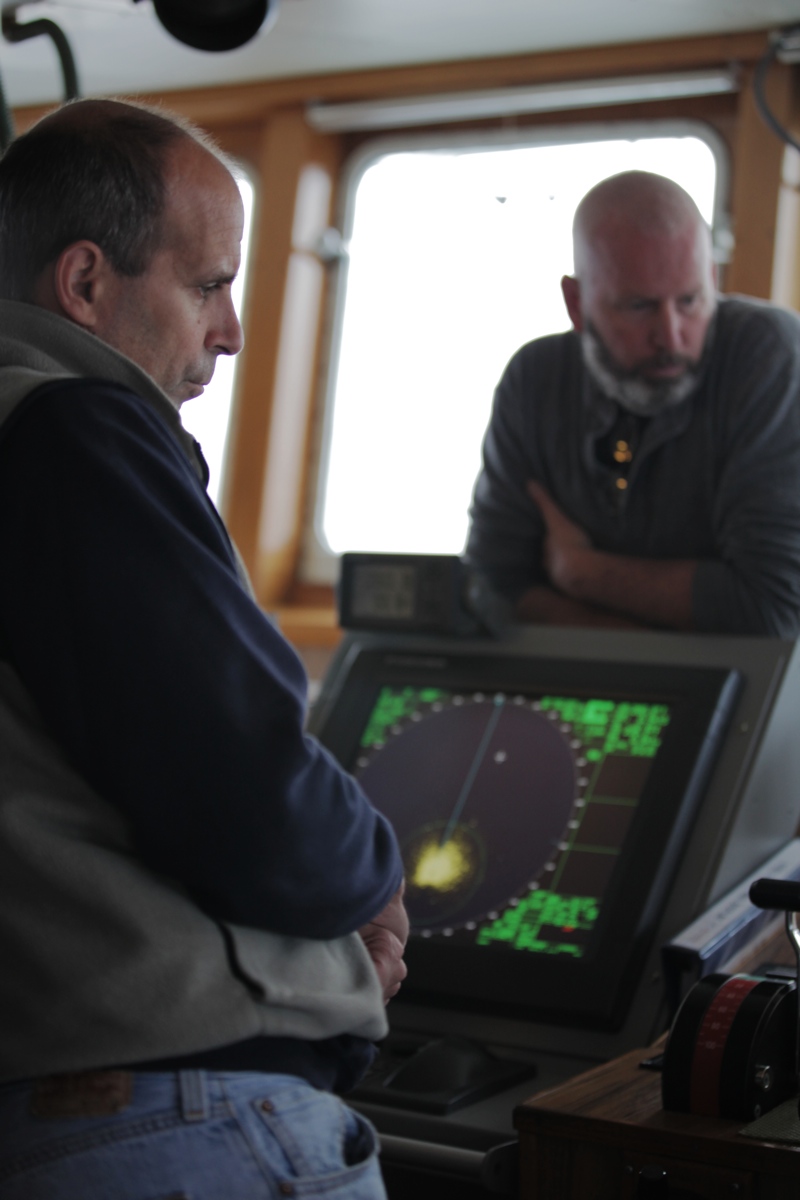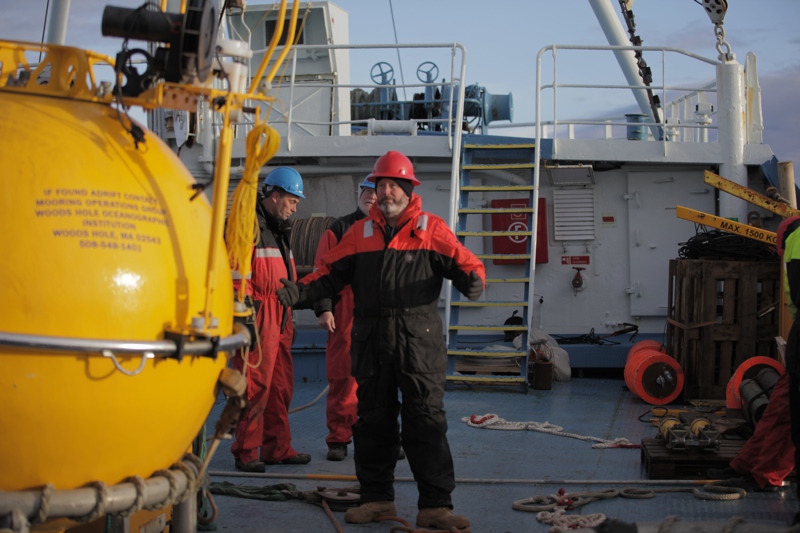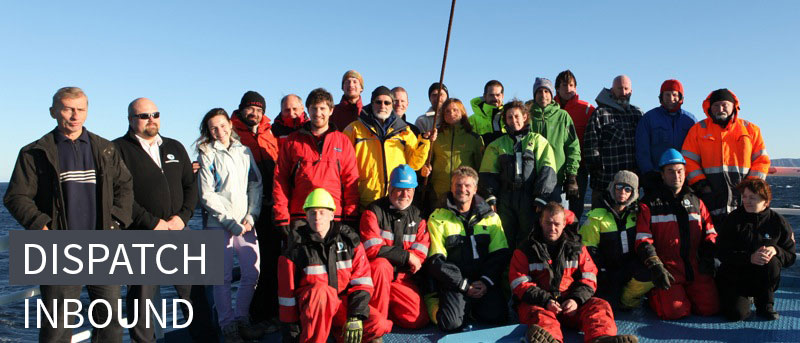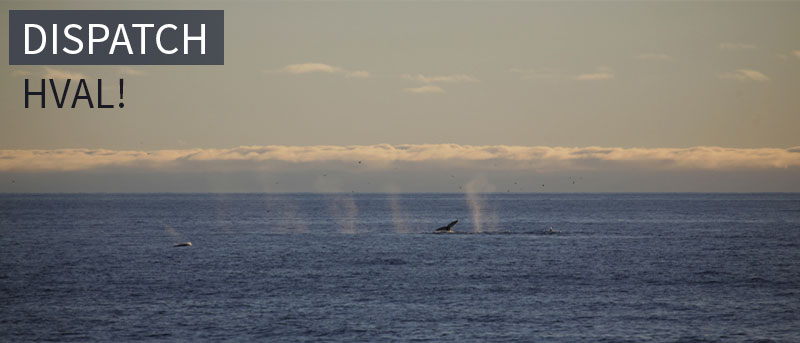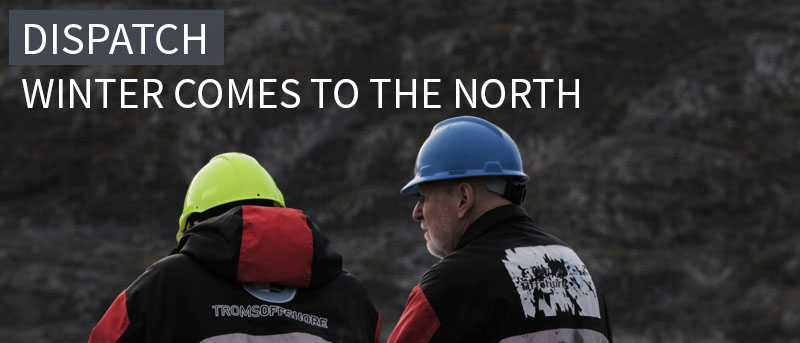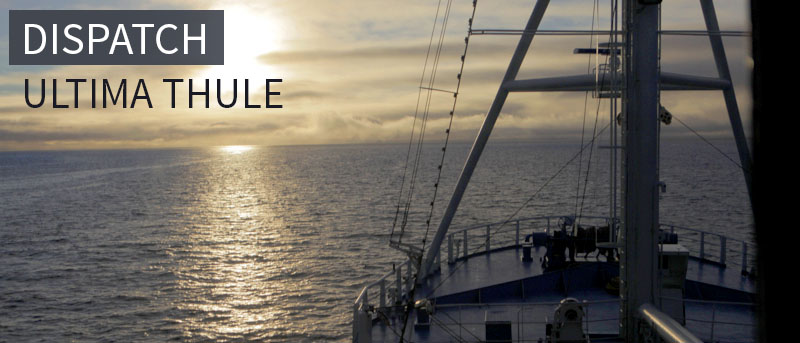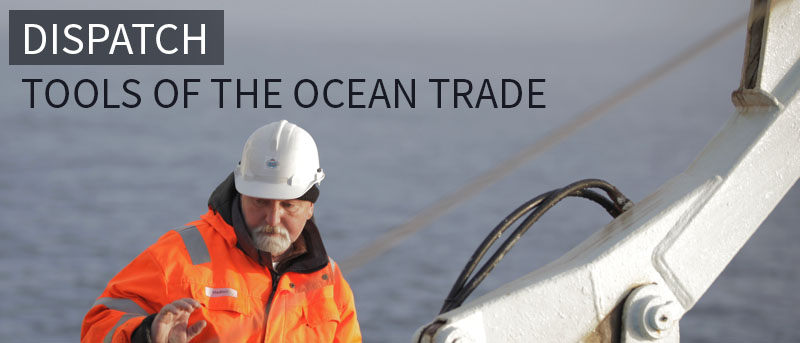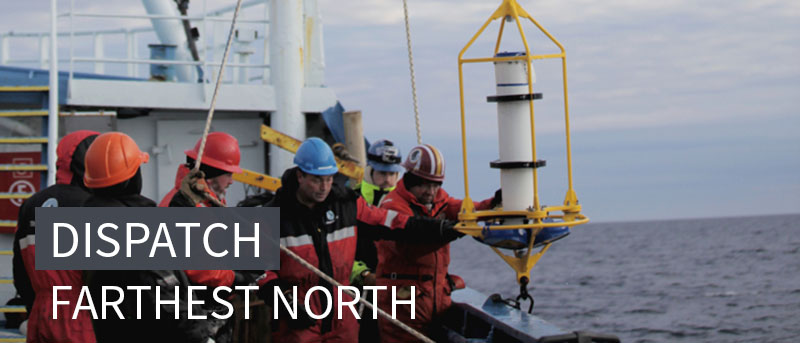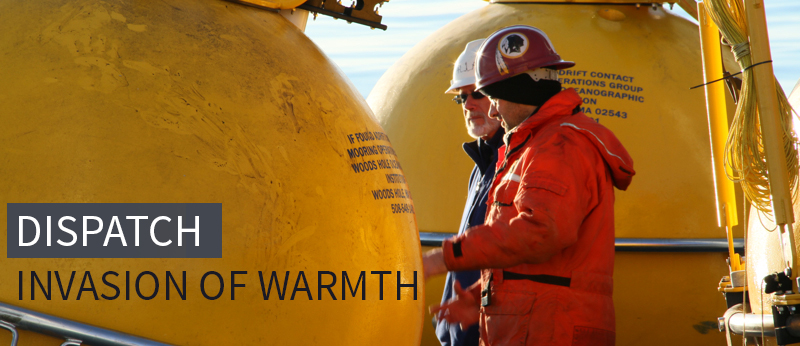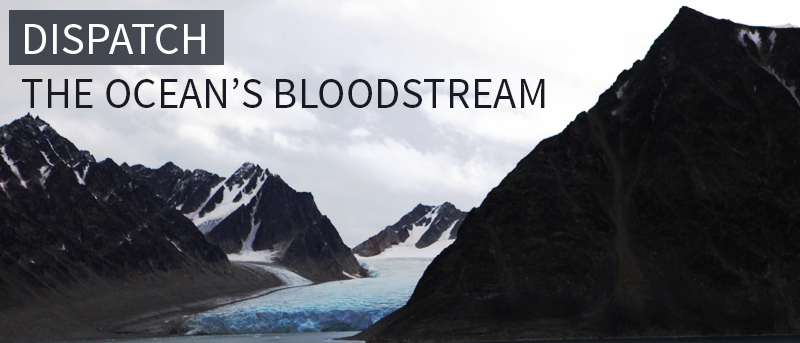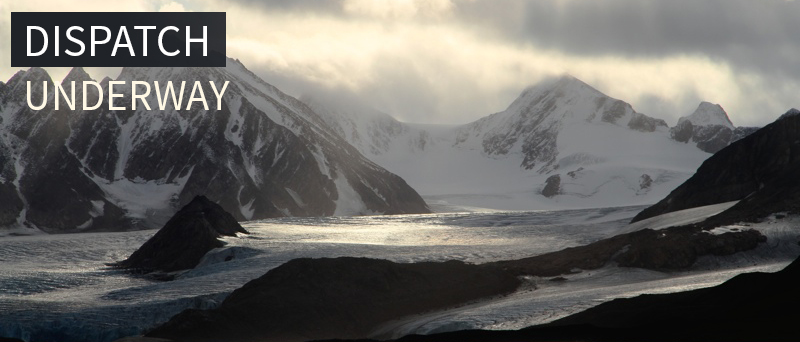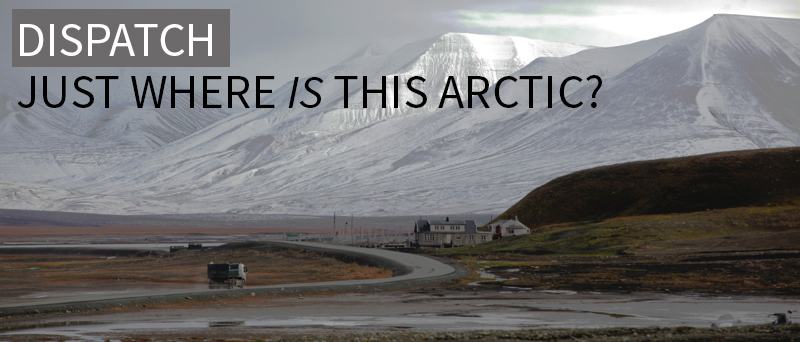BRUTE DIFFICULTY
September 17, 2013
Tweet
“So how was your cruise?”
“Oh, uneventful.”
That’s what oceanographers (and mariners) hope for. Routine. Eventless. Maybe even a bit boring. Today was anything but.
I came up on the bridge after breakfast as usual to observe the ocean, chat with Captain Iversen, and found an anxious crowd of scientists and technicians, tense faces, darting eyes. They’d lost a significant set of instruments, worth about $100,000 along with the still more valuable data they stored. Well, no, that’s not exactly the way to say it. They didn’t lose it, in the sense that you lose your umbrella when you forget it on the bus. No, they knew exactly where it was supposed to be, but it wasn’t there. It had belonged to Chief Scientist Vladimir Pavlov of the Norwegian Polar Institute. Vladimir, originally from St. Petersburg, took the loss with a stoic Russian shrug. He’s a pro, which means, no doubt, that he’s lost instruments in the past. I would have asked him about that, but this just wasn’t a good time. He stood on the starboard side of the bridge staring implacably into the foggy distance.
He’d lost a mooring. The heart of this project consists of eight moorings positioned picket-fence fashion across a carefully chosen site northeast of Svalbard to measure the inflow of warm Atlantic water to the Arctic Ocean. I’d thought to lay a bit more contextual framework about the why and wherefore of the project before getting into the instruments used to measure the ocean. But under the circumstances let’s talk moorings. They’re fundamental to ocean science, examples of the creative solutions to the thorny problem of how to measure the ocean. The word denotes its structure—a wire strung between a heavy anchor and a huge flotation ball set near the surface to hold the wire vertical in the water column—more than its purpose. Its purpose is to afford a fixed position on which scientists can string a top-to-bottom array of measuring devices that automatically record and store data for a year and more. Vladimir’s mooring and the seven others in the study line were deployed last September. That they can remain in the water for long periods is especially important, since only time resolves the constant, small-scale variations inherent to ocean-current behavior. And that’s why the loss of the data outweighs the loss of the instruments. Yesterday I wrote that currents, as they flow around the globe, retain an identifiable fingerprint in the form of temperature and salinity (T/S). If scientists can identify the water contained in a current, they can determine its behavior—and changes in behavior. To do so, this international team of oceanographers attach to the wire miniaturized devices called CTDs that measure T/S profiles and store them on data cards, rather like those in digital cameras, for later retrieval.
Scientists want also to know how fast the water is moving. From velocity, they can calculate the current’s volumetric transport, and thus determine the quantity of heat being transported, which speaks to that relationship between the ocean and climate. Small current meters set at various depths directly record velocity. And then there’s the Acoustic Doppler Current Profiler (ADCP). Sonar-based, the ADCP pings sound pulses into the water column, which, when they bounce off particles of plankton or sediment drifting with the current, return a measure of velocity. The top float is positioned about 100 meters beneath the surface to (hopefully) protect the mooring from passing fishing vessels and ice. But that upper 100 meters is important and must be measured, so often an up-looking ADCP is mounted on the float. A “shipboard” ADCP is also mounted in Lance’s hull pinging the ocean throughout the trip.
The moorings are deployed at precise lat/lon positions, and so we know where to look for them when we return to recover their data, install fresh batteries, and, if applicable, redeploy them. But wait, if that top float is set 100 meters or so beneath the surface, how do you recover the mooring? Many oceanographic measuring devices, which have been adapted from Cold War anti-submarine technology, depend on sonar, because sound waves travel effectively through seawater. The ADCP as an example. The “acoustic release” is another. This clever device is attached to the wire at the bottom just above the anchor. When the time comes to retrieve the mooring, a technician “talks” to the release in acoustic code from a portable computer called the “deck box.” The release responds in code, saying essentially, I’m awake and ready for instructions. The next code tells it to let go. The jaws that connect it to the anchor open, and the mooring—minus the anchor—floats to the surface to be retrieved and brought aboard. At least you hope it does.
Vladimir’s didn’t. The release claimed to have obeyed, but nothing came up. Why? Was the release stuck in the mud? That sometimes happens. So they pinged the mooring with a “fish finder.” Silence. The entire mooring structure was gone, victim most likely of a fisherman’s trawl. There was nothing to do but chalk up the loss and steam on to the next mooring position. That one came up without a hitch. The next in line belonged to Bob Pickart, from the Woods Hole Oceanographic Institution (WHOI). We reached its position, talked to the acoustic release—no answer.
“See,” someone said, “we should never have left port on a Friday.” (An age-old seaman’s superstition.) “Yeah, not only was it Friday, it was Friday the thirteenth.” Was this to be that sort of trip? Eventful? Jinxed? Pros, the brain trust remained calm, at least externally, but the renewed tension hung from the overhead like stalactites. What to do? To lose two moorings, laid in the heart of the current, would be disastrous….Staying out of the way in the corner of the bridge, I didn’t hear the process, but I heard the decision. Maybe the acoustic release didn’t actually hear the release command; Lance is a noisy ship. So let’s shut everything down, let’s even de-clutch the drive shaft so the feathered prop doesn’t turn at all—and try again. If that failed, then we’d have to drag for the mooring, a last-ditch process that often destroys the instruments.
About two days passed, it seemed, before: “Bridge, lab.” It was WHOI tech Jim Ryder on the radio. “Lab, bridge. Go ahead Jimmy.” “I’ve got a signal. It released.” Whew. But hang on. Vladimir’s had said it released, but there was nothing to release. Would anything actually come to the surface?...Yes, there! Away to starboard, the big yellow top float bounced up with a splash. And the Captain, Bob, and these other veterans of high-latitude oceanography cheered like collegians at the winning touchdown in the homecoming game. This is definitely not laboratory science. The ocean, particularly up here at 81° N, is a tough, unforgiving work environment. Watching these slick professionals on this and previous cruises, one tends to forget that, until something goes wrong. I like the way that MIT oceanographer Carl Wunsch put it: “Oceanography is a young science because of the brute difficulty of measuring the ocean.”
-Dallas Murphy


